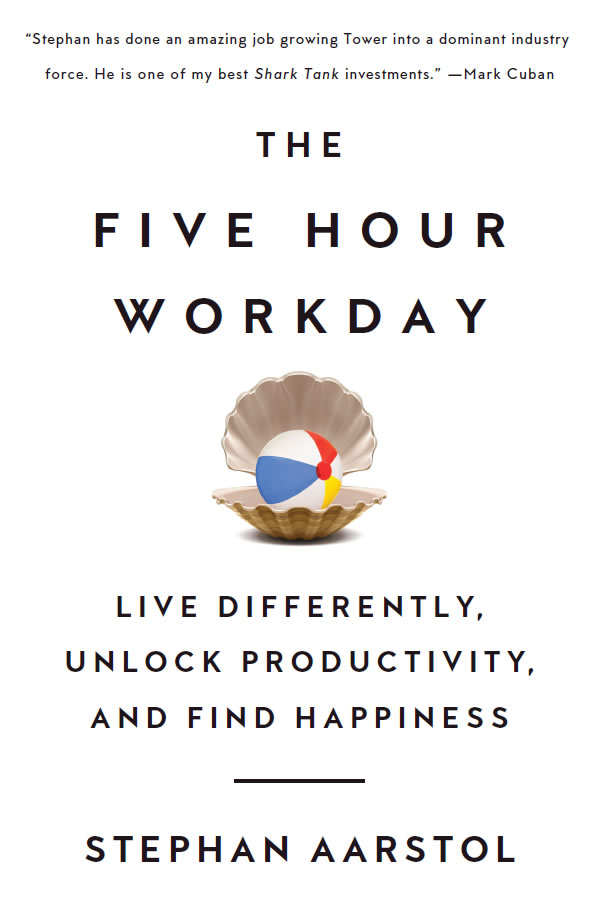When I tell employers and business owners about the five-hour workday, their first reaction is often the traditional one that you’d expect: that if the employees are winning, then the employer is losing.
This traditional, outdated mindset is that it’s a battle, and zero-sum game.
Not in the new economy, my fellow business owners. The world is different now. Thanks to technological advances, we are leaving behind the age of scarcity and rapidly entering an age of abundance, which I’ll talk about later.
Productivity is up, but not the hours needed to grow it
The traditional employer mindset, still lingering from the Industrial Age, is that fewer hours means less output. If someone works 4 hours instead of 8, they’ll only get half of their work done.
But what employers are failing to see is, cheats have already been worked into the system here. They’re making productivity gains every day, but they’re not telling you.
 What are they doing instead? Facebook. Fantasy football. Amazon shopping. Vacation planning. Do I need to keep going? We all know there’s a ton of waste in the typical work day.
What are they doing instead? Facebook. Fantasy football. Amazon shopping. Vacation planning. Do I need to keep going? We all know there’s a ton of waste in the typical work day.
Do you know what the biggest online shopping day of the year is? It’s Cyber Monday, a day where everyone is “working.” Why don’t employers care? Because output isn’t down. Productivity isn’t down.
What is down, however, are the total number of hours we need to do our work.
That’s part of where telecommuting comes from. It’s from employees who understand that they need to get the hell out of the office, because they really only need two or three hours a day to get all of their work done. And now we’ve got a huge growth in freelance workers, and employees choosing to go to that side of the table, for (what I believe to be) the same reasons.
The writing is on the wall, and employers just need to wake up to this reality.
If you’re an employer, and you agree with me that your most talented, productive workers are going to be hard to retain in the future ahead of us, then you ought to be thinking about how to compete in that environment. An environment where workers are looking to make the same (or more) money, in fewer hours.
Creating a new bargain with employees
In the knowledge worker sector, it’s a race for talent. In my company and industry, I’d say that one brilliant, innovative, productive employee is worth 3 to 5 average employees. I’m betting it’s that way in your business too, and maybe even exponentially more important than it is in mine.
And you know what? The brilliant people, they know they’re brilliant, and more productive than everyone around them. That’s why they leave for more money, or fewer hours. That’s why they start their own business, or go to the freelancing side of the table.
So how do you attract and retain these talented people? You’ve got to give them a new bargain. As they say in the entrepreneurial world, you’ve got to figure out how to “expedite the inevitable.” Be in front of the curve, or become a victim of it.
That’s what the five-hour workday is. You’re saying, “Look, I’m going to give you a big part of your life back. It’s going to be the same money you’d make at an eight-hour-a-day competitor of ours, but you’ll only need to be here five hours a day.”
The average worker in America actually works 47 hours a week, not 40. For 25 percent of the population, they report that they work more than 60 hours a week, and another 20 percent that work around 50 hours a week. So, almost half of America is working 50 hours a week or more.
This is an epidemic, and it’s going to correct itself. And if you want be ahead of the curve, and you want to attract those talented people instead of lose them, then you’re reading the right book.
A shorter workday as a competitive advantage
When you cut a fair bargain like this one, and give employees the respect and freedom that they deserve, you’ll not only retain your own talent, but you’ll start stealing talent from everybody else in town. In the next few years – and the next few decades perhaps – this strategy will have massive benefits in recruitment and hiring, for every company that offers a shorter workday.
This can also bolster customer loyalty and your overall sales. When your end customers see and hear how well your employees are treated (because you should be talking about this on social media, in a way that customers can see it), that’s going to build brand equity and goodwill. Customers are employees somewhere too, after all, and thus tend to buy products and services from companies that take good care of their employees.
And your employees, being happy, will have happier interactions with your end customers.
Happy employees, happy customers. Isn’t this what we all want?
Want to boost your team’s productivity?
Even if a five-hour workday might not be realistic for your organization, advancements in technology can help your HR team be more productive. Check out Harver’s Hiring Process Optimization for a comprehensive solution that automates key steps of the hiring process and enables faster, fair hiring decisions. For instance, our Harver Reference solution saves recruiters an hour per check.
Reprinted with permission from The Five Hour Workday – Live Differently, Unlock Productivity, and Find Happiness by Stephan Aarstol. Copyright 2016 by Stephan Aarstol Published by Lioncrest Publishing.


